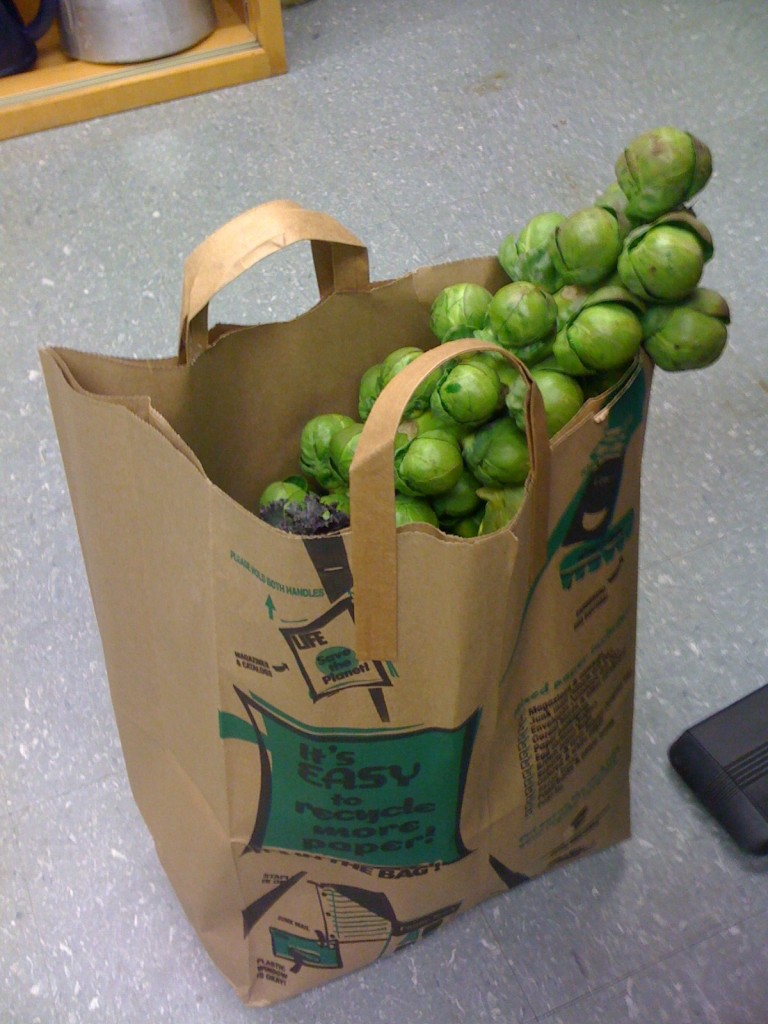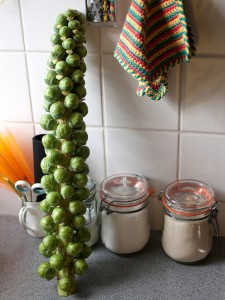If you see a guy holding this stalk of brussels sprouts reciting the definition of qPCR in a promotional video from Agilent, it just might be me. (How many biologists carrying telegenic vegetables are they likely to find on campus? 😉 )
Edit: For the record, qPCR is a technique used to estimate the relative proportions of different DNA sequences in a sample. Perhaps most commonly, this is used to measure how strongly different genes are expressed. (Isolate RNA from a tissue, reverse transcribe it into DNA and measure how abundant your the sequence of your favorite gene is in the same.) When a plant needs more of a protein (say one that helps defend against fungal infection), it will produce more RNA copies of that gene’s sequence, each of which can be used over and over as a blueprint for ribosomes to make more copies of that particular protein. The acronym itself stands for quantitative Polymerase Chain Reaction.Which isn’t the most coherent explanation of a molecular biological technique I’ve ever written, but it has been a long day.

